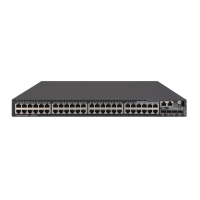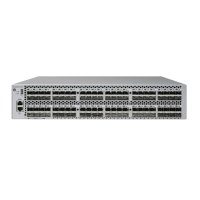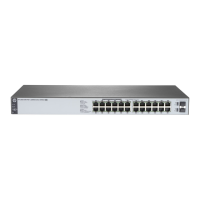135
Configuring RSVP
Overview
The Resource Reservation Protocol (RSVP) is a signaling protocol that reserves resources on a
network. Extended RSVP supports MPLS label distribution and allows resource reservation
information to be transmitted with label bindings. This extended RSVP is called RSVP-TE. RSVP-TE
is a label distribution protocol for MPLS TE. It distributes MPLS labels and reserves resources on the
nodes of a specific path to establish a CRLSP.
RSVP messages
RSVP uses the following types of messages:
• Path messages—Sent by the sender downstream along the data transmission path to save
path state information on each node along the path.
• Resv messages—Sent by the receiver upstream towards the sender to request resource
reservation and to create and maintain reservation state on each node along the reverse of the
data transmission path.
• PathTear messages—Sent downstream by the sender or a transit node to remove the path
state and related reservation state on each node along the path.
• ResvTear messages—Sent upstream by the receiver or a transit node to remove the
reservation state on each node along the path.
• PathErr messages—Sent upstream by the receiver or a transit node to report Path message
processing errors to the sender. They do not affect the state of the nodes along the path.
• ResvErr messages—Sent downstream by the sender or a transit node to notify the
downstream nodes that an error has occurred during Resv message processing or that a
reservation error has occurred because of preemption.
• ResvConf messages—Sent to the receiver to confirm Resv messages.
• Hello messages—Sent between any two directly connected RSVP neighbors to set up and
maintain the neighbor relationship. Hello messages are sent only when the RSVP hello
extension has been enabled.
RSVP-TE extends RSVP by adding new objects to Path and Resv messages. In addition to label
bindings, these objects also carry routing constraints to support CRLSP and FRR.
New objects added to the Path message include:
• LABEL_REQUEST—Requests the downstream node to allocate a label.
• EXPLICIT_ROUTE—Carries the path information calculated by the ingress node, making sure
the CRLSP is set up along that path.
• RECORD_ROUTE—Records the path that the CRLSP actually traverses and the label
allocated by each node on the path.
• SESSION_ATTRIBUTE—Carries the MPLS TE tunnel attributes, such as the setup priority,
holding priority, and affinity.
New objects added to the Resv message include:
• LABEL—Advertises the label allocated by the downstream node to the upstream node.
• RECORD_ROUTE—Records the path that the CRLSP actually traverses and the label
allocated by each node on the path.

